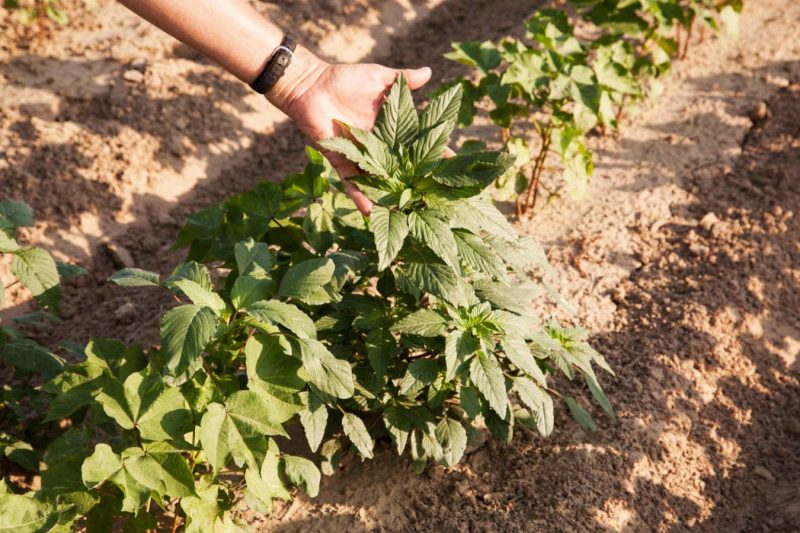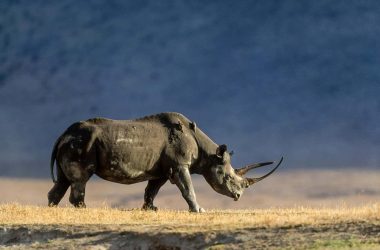Herbicide-resistant pigweed is a rising drawback for farmers
Design Pics Inc / Alamy Inventory Photograph
A gene drive – a little bit of DNA that cheats evolution and may unfold even when dangerous – has been efficiently examined in a plant for the primary time. The strategy may very well be used to wipe out invasive crops and superweeds with out harming different species, so might due to this fact cut back the usage of herbicides. It might additionally assist save species by spreading genes that make them immune to ailments or extra in a position to deal with world warming.
Gene drives work by skewing the percentages of an organism inheriting a chunk of DNA. Most crops and animals have two copies of every gene, that means there may be normally a 50 per cent probability of a specific copy being handed on to offspring. A gene drive might increase that probability to, say, 80 per cent, permitting the genes to unfold even when they’re detrimental.
There are various pure gene drives that work by way of all kinds of mechanisms. In 2013, the CRISPR gene-editing approach was used to create the primary synthetic gene drive.
It copies itself from one chromosome to the opposite, that means all offspring will inherit it. This strategy known as a homing gene drive, as a result of the drive copies itself to a selected website.
Bruce Hay on the California Institute of Know-how and his colleagues have taken a unique strategy, known as cleave and rescue. The gene drive consists of CRISPR parts that concentrate on and destroy each copies of a key gene wanted for pollen and eggs to type. Nonetheless, the drive additionally incorporates a working model of this gene that doesn’t get destroyed.
This implies pollen and eggs that don’t inherit the gene drive lack the important thing gene and don’t develop. Solely pollen and eggs with the gene drive develop usually, so all offspring inherit it.
The cleave-and-rescue strategy is extra sturdy than a homing drive as a result of destroying genes is far simpler than copying and pasting them, says Hay. It ought to work in all animals in addition to crops, he says, and may very well be used to get rid of mice and rats from islands the place they’re wiping out native species.
Hay’s workforce has examined a working model of this drive – designed solely to unfold, to not kill – within the thale cress Arabidopsis thaliana. One other workforce, led by Yang Liu on the Chinese language Academy of Sciences in Beijing, has additionally posted a paper describing a similar gene drive in crops, however that strategy isn’t as highly effective, says Hay.
He and his workforce now plan to check their drive in pigweed (Amaranthus palmeri), a herbicide-resistant superweed that could be a rising drawback for farmers in lots of components of the world. “It’s a poster youngster for buying broad resistance to all current herbicides,” says Hay.
What’s extra, the know-how may very well be tailored to regulate weeds with out spreading indefinitely. For example, it may very well be used to create male crops whose pollen kills off any feminine offspring. Planting these male crops round farms every year would get rid of that weed species from the fields after just a few years by blocking seed manufacturing.
“That will in the end crash your entire native inhabitants, however not the worldwide inhabitants, simply by eliminating females,” says Hay. Nonetheless, this female-killing trait would die out if no extra male crops with it had been planted.
This strategy is more likely to be permitted by regulators than a gene drive that retains spreading till resistance evolves, says Hay. In actual fact, an identical strategy is already being utilized by an organization known as Oxitec to regulate malaria-carrying mosquitoes in a number of international locations.
Nonetheless, Paul Neve on the College of Copenhagen in Denmark is uncertain about whether or not regulators will approve the usage of gene drives for weed management. “I feel that the possibilities of getting approval to launch gene drives for agricultural utility are at the moment distant. Healthcare and biodiversity conservation could also be a neater promote,” he says.
One other main drawback is that crops normally produce one technology per yr and it might take 10 to 30 generations for drives to unfold extensively, says Neve. “How do you get a gene drive to unfold quick sufficient to ship significant weed management in a practical timeframe?”
Matters:












